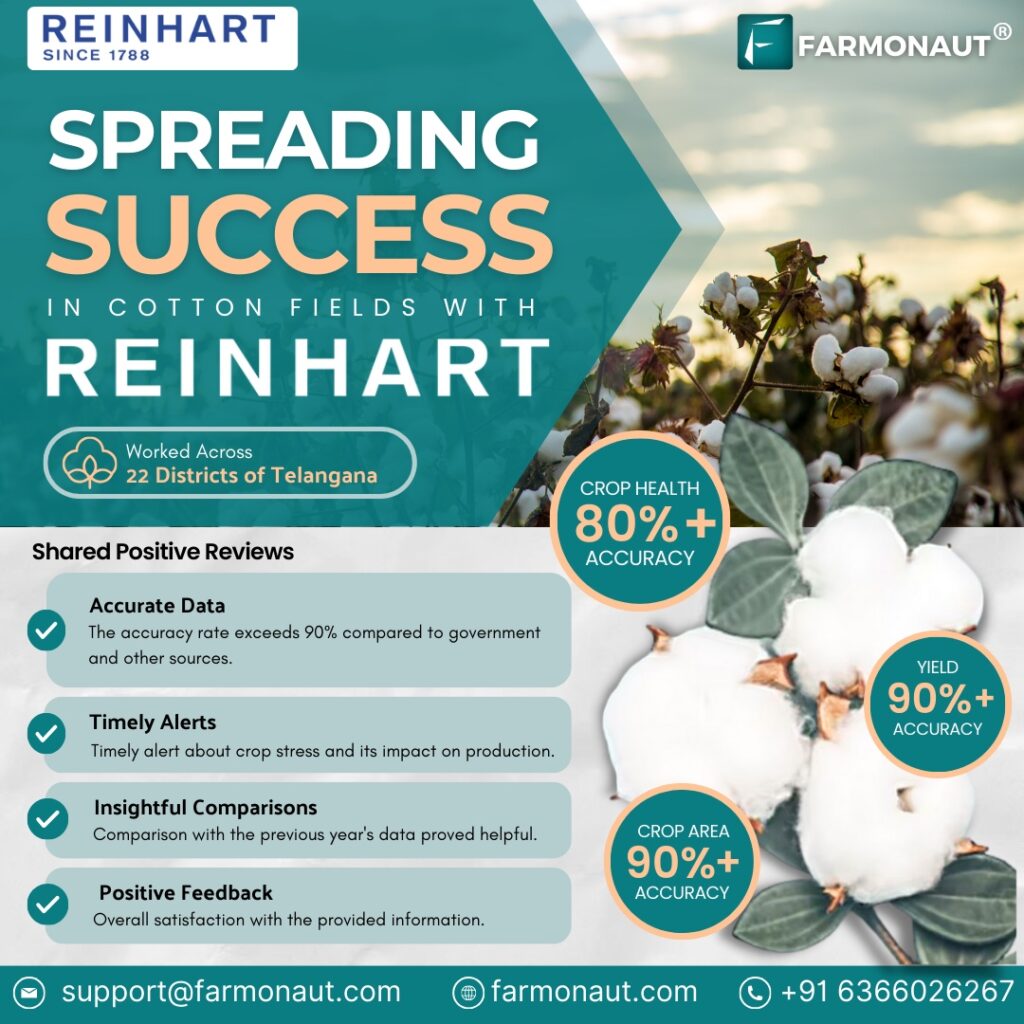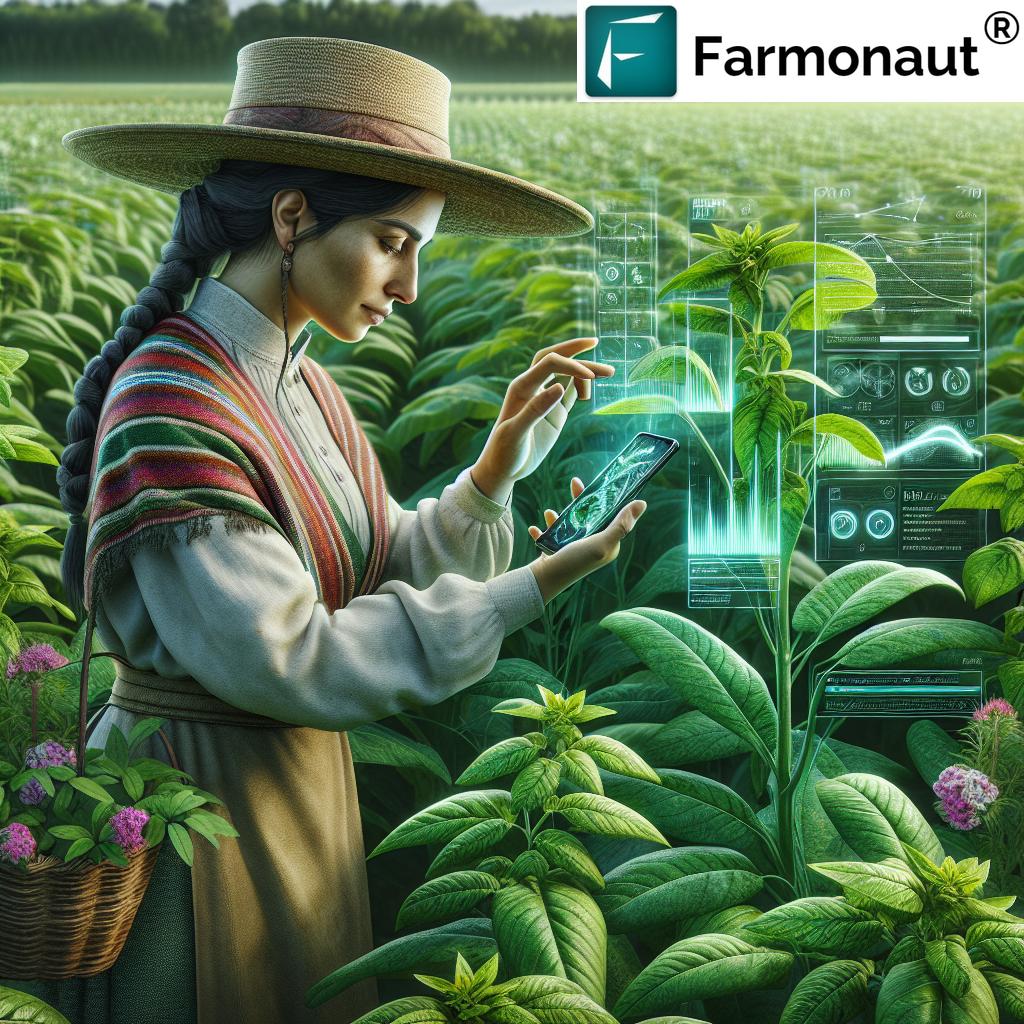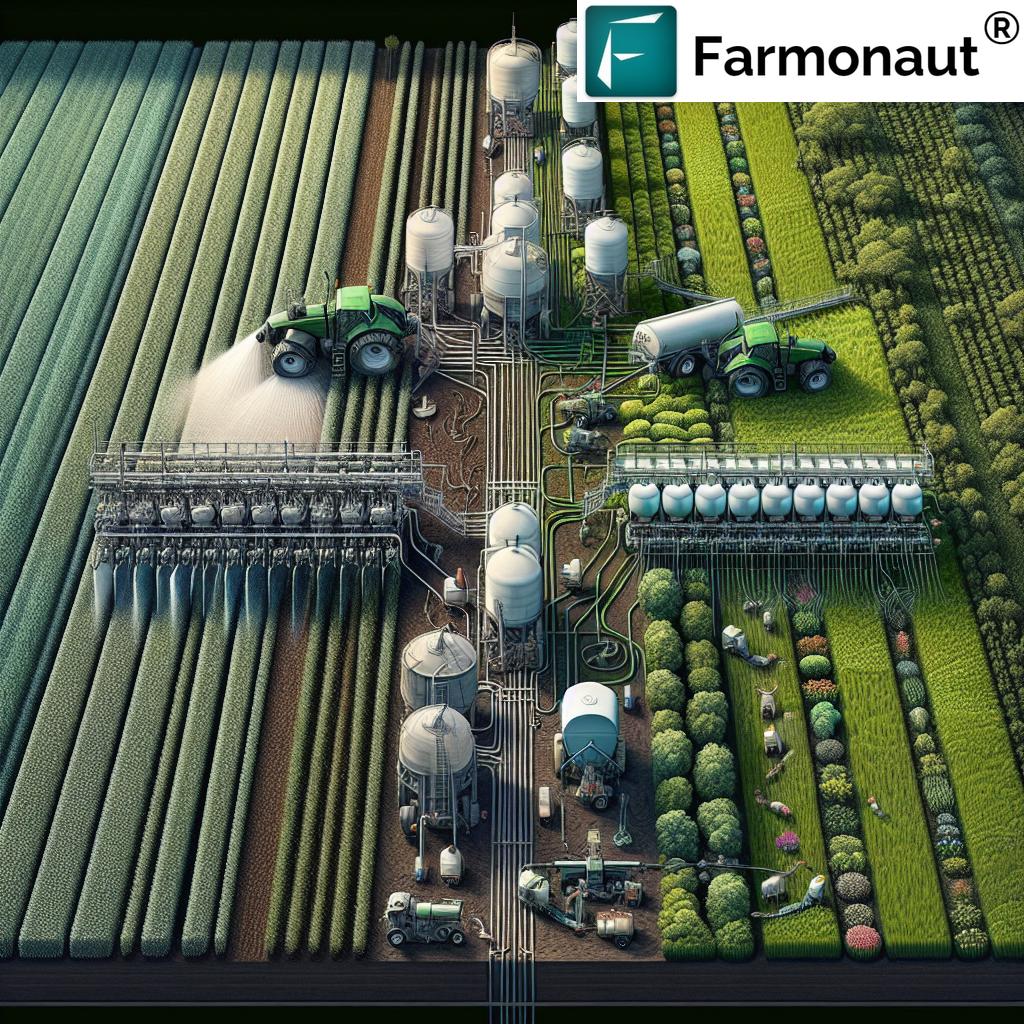Lawn Pesticides, Bio & Drones: 2026 Guide — Sustainable Innovations, Environmental Impact & the Future of Pest Control
Table of Contents
- Introduction
- Trivia: Bio-Pesticide Growth
- Evolution of Pesticides: From Chemicals to Bio-Pesticides
- Bio Pesticides in Integrated Pest Management
- Trivia: Urban Water Contamination
- Pesticides in Water: Impact, Risks & Regulatory Trends
- Drone Technology: Revolutionizing Pesticide Application
- Comparison Table: Conventional, Bio & Drone-Driven Applications (2025)
- Pesticides in Food, Plants & Consumer Safety
- Farmonaut: Advancing Sustainable Pest Management
- Key Innovations & Trends for 2026 and Beyond
- Frequently Asked Questions (FAQ)
- Conclusion & Call to Action
Introduction: Lawn Pesticides, Bio-Pesticides & Drones – A Sustainable Future in 2026
Lawn pesticides and other pest control tools have long stood as the cornerstone of modern agriculture, safeguarding crops and maintaining lush landscapes. In 2025, driven by growing environmental concerns and technological advancements, the evolution of pesticides is transforming how we cultivate, protect, and nurture our plants, food supplies, and natural resources.
This comprehensive guide explores the past, present, and future of lawn pesticides, bio pesticides, and drones pesticides for sustainable patterns and eco-friendly practices. Join us as we examine the critical impact of pesticides for plants and the role of innovation in reducing water contamination, promoting food safety, and enabling smarter, more efficient agriculture in 2026.
Did You Know?
“By 2025, global bio-pesticide use is projected to reach 5% of the total crop protection market, up from 2%.”
Evolution of Pesticides: From Chemicals to Bio-Pesticides
Since the early decades of industrialized agriculture, pesticides have served as the primary defense against a wide array of pests, invasive species, and diseases. These traditional synthetic chemicals—such as organochlorines, organophosphates, and carbamates—are designed to control weeds, fungi, and insects, ensuring higher yields for both lawn and field crops.
However, the ecological and human health risks associated with the use of such synthetic pesticides are significant:
- Soil degradation and contamination
- Loss of beneficial insects (like pollinators and natural pest predators)
- Persistence and accumulation of toxic residues in water, crops, and food systems
- Emergence of pest resistance due to overreliance on chemical treatments
These pressing issues have led to increased scrutiny and a demand for safer, sustainable alternatives that reduce environmental impact and public health risks. As a result, bio pesticides have gained prominence in recent years.
Bio pesticides consist of naturally derived substances, including:
- Bacteria (e.g., Bacillus thuringiensis), fungi, and other microorganisms
- Plant extracts and essential oils
- Biochemical compounds that specifically target harmful pests with minimal collateral damage to beneficial species and the broader environment
The ongoing evolution of pesticide technology promises an even greater role for bio pesticides by 2026, particularly as climate-smart agriculture and regulatory frameworks drive change across sectors.
Bio Pesticides & IPM: Integrating Sustainability in Lawn & Crop Protection
Bio pesticides are an integral part of Integrated Pest Management (IPM)—a strategic approach that combines biological, cultural, mechanical, and chemical methods for effective pest control. In 2025 and beyond, these practices will:
- Minimize dependency on chemical pesticides, reducing the development of pest resistance
- Encourage targeted, precision application, lowering residues in both food and water systems
- Promote environmental health by safeguarding biodiversity and pollinator populations
- Align with consumer demands for safer, eco-friendly produce
Bio pesticides offer advantages over synthetic options, such as:
- Specificity: Target only the intended pest species, protecting beneficial organisms
- Biodegradability: Break down quickly, reducing lingering residues and contamination
- Reduced pest resistance: New biological modes of action that stay ahead of evolving pests
Regulatory pressures and policy incentives are accelerating the global shift to bio-based lawn and crop protection. By 2026, it’s anticipated that bio pesticides will represent a growing share of the global crop protection market, transforming sectors from large-scale agriculture to golf courses and urban landscapes.
Did You Know?
“Lawn pesticides contribute to 60% of urban water pesticide pollution, emphasizing the need for sustainable alternatives in 2026.”
Pesticides in Water: Impact, Risks, and Regulatory Trends
The ecological implications of pesticides in water are among the most critical challenges facing agriculture and municipalities today. Pesticide runoff from treated lawns, gardens, and agricultural fields can leach into groundwater or be carried by stormwater into rivers, lakes, and urban water bodies, resulting in:
- Acute and chronic toxicity to aquatic species (fish, invertebrates, amphibians)
- Disruption of entire aquatic food webs through bioaccumulation and biomagnification
- Risks to human health through contaminated drinking water supplies and irrigation systems
As public awareness grows, so does the demand for stringent regulatory frameworks and better monitoring systems to limit runoff and contamination:
- Adoption of buffer zones and vegetative strips to intercept runoff
- Use of real-time detection technology to identify and respond to contamination events
- Promotion of precision application and smart irrigation to minimize leaching and water waste
Regulatory agencies worldwide are setting lower maximum contaminant levels (MCLs) and requiring proof of safety for new pesticide registrations.
Over the next few years, advances in satellite monitoring, like those provided by Farmonaut, are enabling both city planners and farmers to make data-driven decisions for reducing pesticide runoff. This is vital for maintaining healthy aquatic ecosystems and ensuring safe water for urban and rural communities alike.
For those seeking detailed insights and real-time tracking solutions, Farmonaut’s Carbon Footprinting & Environmental Impact Monitoring tools empower users to map, measure, and mitigate the footprint of pesticide use and other agri-inputs on local water bodies. Their platform is designed to support better regulatory compliance and sustainability reporting, positioning growers for future-ready stewardship.
Drone Technology in Lawn & Crop Pesticide Application: Precision, Safety & Efficiency
By 2025 and 2026, drone technology has revolutionized how we approach lawn pesticides and large-scale pesticide application. With AI-guided flight paths and multispectral sensors on board, drones pesticides are transforming the landscape by:
- Delivering targeted pest control exactly where it’s needed — even in difficult, hilly, or forested areas
- Reducing total chemical use by avoiding blanket spraying and minimizing drift into non-target zones
- Lowering labor costs and reducing human exposure to chemical risks
- Enabling real-time monitoring and automation for adaptive, site-specific treatment
Drones are especially valuable for urban lawns, golf courses, orchards, and plantations—precisely applying pesticides for plants and turf while reducing water contamination and enhancing ecosystem safety.
By 2026, expect growing policy recommendations and incentive programs for drone-assisted pest management, particularly where urban pesticide runoff has been a historic challenge.
Farmonaut’s Crop Plantation & Forest Advisory App enables users to integrate real-time satellite data into their farm and forestry planning, maximizing the benefits of “drone + satellite” precision in sustainable pest control. For those interested in advanced technology management across extensive lands, their Android and iOS apps offer user-friendly access to the latest AI and monitoring tools.
Comparison Table: Conventional Pesticides, Bio-Pesticides, and Drone Applications in 2025
| Method | Environmental Impact (Estimated Water Contamination % / Biodiversity Loss %) |
Food Safety (Residue Level Index) |
Application Efficiency (Coverage Accuracy %) |
Cost Range ($/hectare, est.) |
|---|---|---|---|---|
| Conventional Pesticides | High (10-30% water contamination / 15-25% biodiversity loss) | High (4/5) | Moderate (65-80%) | $60–120 |
| Bio-Pesticides | Low (1-5% water contamination / 2-7% biodiversity loss) | Low (1/5) | Good (75-90%) | $80–150 |
| Drones | Very Low (0.5-2% water contamination / 0-3% biodiversity loss) | Very Low (0.5/5) | Excellent (90-97%) | $70–130 |
*Estimates based on aggregated studies and industry reports for 2025; actual figures may vary by region, application, and implementation quality.
Pesticides for Plants, Food Safety & Residue Management
Consumer concerns about food safety and pesticide residues in food are intensifying in 2026. International food standards establish maximum residue limits (MRLs) for each pesticide, ensuring that produce is safe for human consumption before it reaches the market. Key food safety trends and strategies include:
- Developing pesticides for plants that degrade rapidly and do not accumulate in edible parts
- Using bio pesticides and natural extracts to further reduce toxic residues in crops
- Leveraging real-time detection and traceability technology to ensure compliance with strict regulations
Consumer demand is driven by:
- Transparency and trust in sourcing (blockchain-based traceability tools now make this possible. See Farmonaut Traceability Solutions for more.)
- Preference for organic and chemical-free produce, which relies heavily on approved bio pesticides and cultural controls
- Desire for sustainably produced, low-residue food in urban and rural markets
Farmonaut: Advanced Satellite Technology for Sustainable Pesticide Management
At Farmonaut, we believe that advanced monitoring and satellite insights are the key to smart, sustainable pest management in agriculture, forestry, and urban landscapes.
- Satellite-Based Monitoring: We provide real-time crop health, soil condition, and resource management data to enable better decision-making for pesticide use, reducing unnecessary applications and protecting the environment.
- Jeevn AI Advisory System: Our AI-driven tools offer customized strategies and adaptive advice, helping farmers and businesses apply lawn pesticides, bio pesticides, and drones pesticides only where, when, and how they are needed.
- Environmental Impact Tracking: With real-time emissions and pollution tracking, users can assess, monitor, and mitigate pesticide runoff and contamination risks at scale—strengthening sustainability credentials and compliance for 2026 and beyond.
For large agri-enterprises, forestry managers, or urban horticulturists, explore our Large-Scale Farm Management Platform. This solution delivers robust analytics, historical reports, and actionable alerts for precision chemical and biological input management.
Fleet Management Tools further enable users to manage and optimize deployment of drones and ground equipment, supporting efficient, timely pesticide application with lower operational costs.
And for banks or financial institutions seeking fraud-resistant verification for agri-loans, our Satellite-Based Crop Loan & Insurance Verification Service delivers secure, data-backed checks for agricultural financing and insurance.
For developers building next-generation agri-tech or environmental analytics, our open Farmonaut APIs and Developer Docs allow seamless integration of satellite, field, and climate monitoring into custom dashboards and solutions.
2026 & Beyond: Key Innovations & ESG Trends in Pesticides, Water & Food Safety
The next era of pesticide technology and risk management is being shaped by several converging innovations, regulatory changes, and market forces:
- Blended Pest Management: Combining bio pesticides, drone technologies, and advanced satellite-advisory platforms for holistic, adaptive IPM systems.
- Precision & Automation: Automated application systems are reducing overspray, minimizing operator exposure, and optimizing water and input use per hectare.
- Next-Gen Bio Pesticides: Spinach peptide and RNAi-based products leading the charge in targeted, safe, and residue-free solutions.
- Digital Traceability: End-to-end documentation — from raw material sourcing to finished produce — using blockchain. This transparency builds consumer confidence and improves regulatory trust, especially in export markets and among health-conscious buyers.
- Stricter Environmental Standards: National and municipal bodies are lowering acceptable limits for pesticide residues in both water and food. Farmonaut’s Carbon Footprinting Platform can be part of proactive compliance strategies, keeping growers ahead of new ESG reporting mandates.
- Urban & Lawn Market Focus: With laawn pesticides now recognized as a major contributor to urban water contamination, city-level ordinances and voluntary programs are rapidly promoting alternatives such as bio pesticides and integrated management for golf courses, parks, and residential greenery.
- AI-Driven Marketplaces and Advisory: New apps are matching growers with evidence-backed products, best practices, and instant monitoring. Farmonaut remains at the forefront, making affordable insights accessible via mobile apps and browser-based dashboards around the globe.
Frequently Asked Questions (FAQ): Lawn Pesticides, Bio-Pesticides, Drones, and Environmental Safety 2026
Q1. What are lawn pesticides, and how do they affect water quality?
Lawn pesticides are chemical or biological agents used to control weeds, insects, and diseases in turf, parks, and home gardens. When not used with precision or sustainable practices, they can leach into groundwater or run off during rain, significantly impacting water quality and aquatic life.
Q2. Why are bio pesticides considered safer for the environment?
Bio pesticides consist of natural substances—including bacteria, fungi, and plant extracts—that target pests without harming beneficial insects or pollinators. They’re rapidly biodegradable, reducing long-term contamination and resistance risks.
Q3. How does drone application enhance pesticide efficiency?
Drone pesticide application enables site-specific targeting, minimizing off-target drift, runoff, and operator contact. Drones carry advanced sensors and mapping tools for adaptive, precise coverage, particularly in large or challenging landscapes, reducing waste and cost.
Q4. How can I ensure pesticides in food are below legal residue limits?
Select produce from reputable sources following certified practices, check for local and international certification, and stay informed about current MRL standards. Digital traceability platforms now help retailers and consumers verify compliance.
Q5. What technologies are available for monitoring my pesticide use and impact?
Satellite-based apps and farm management platforms let users monitor crop health, soil quality, and application efficiency in real time. These tools support informed decision-making, regulatory compliance, and sustainability reporting.
Conclusion: Embracing a Sustainable, Tech-Driven Future for Pesticides & Lawn Care in 2026
Pesticides—whether for lawns, crops, or forestry—will continue to evolve dramatically as we move into 2026 and beyond. Bio pesticides, drone applications, and advanced monitoring technologies are reshaping the environmental, economic, and safety landscape for pest control globally.
- Lawn and bio pesticides managed with precision and innovation can reduce runoff, safeguard water and food safety, and foster thriving, resilient ecosystems.
- Drones and satellite insights enable tailored, adaptive management, boosting efficiency and sustainability.
- Regulatory frameworks and public awareness will intensify, rewarding those who adopt sustainable practices and rigorous monitoring in their operations.
- Consumer demand for safe food and clean water continues to drive investment in new technologies, integrated approaches, and transparent supply chains.
Farmonaut remains committed to empowering growers, businesses, governments, and consumers with affordable, accessible tools for data-driven, eco-friendly pest and land management. Ready to join the sustainable revolution? Start leveraging next-gen solutions today for a better tomorrow.
Explore even more on Farmonaut’s official website — or visit our carbon footprinting, traceability, and crop loan & insurance product pages to learn how satellite-driven insights can work for you—all in support of cleaner food, safer water, and a more resilient planet.










